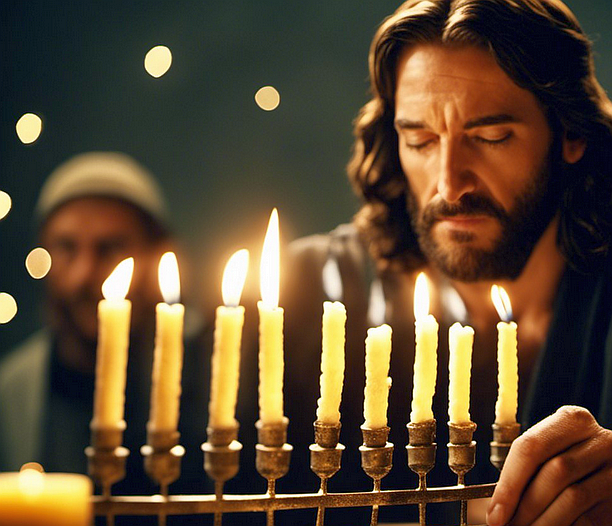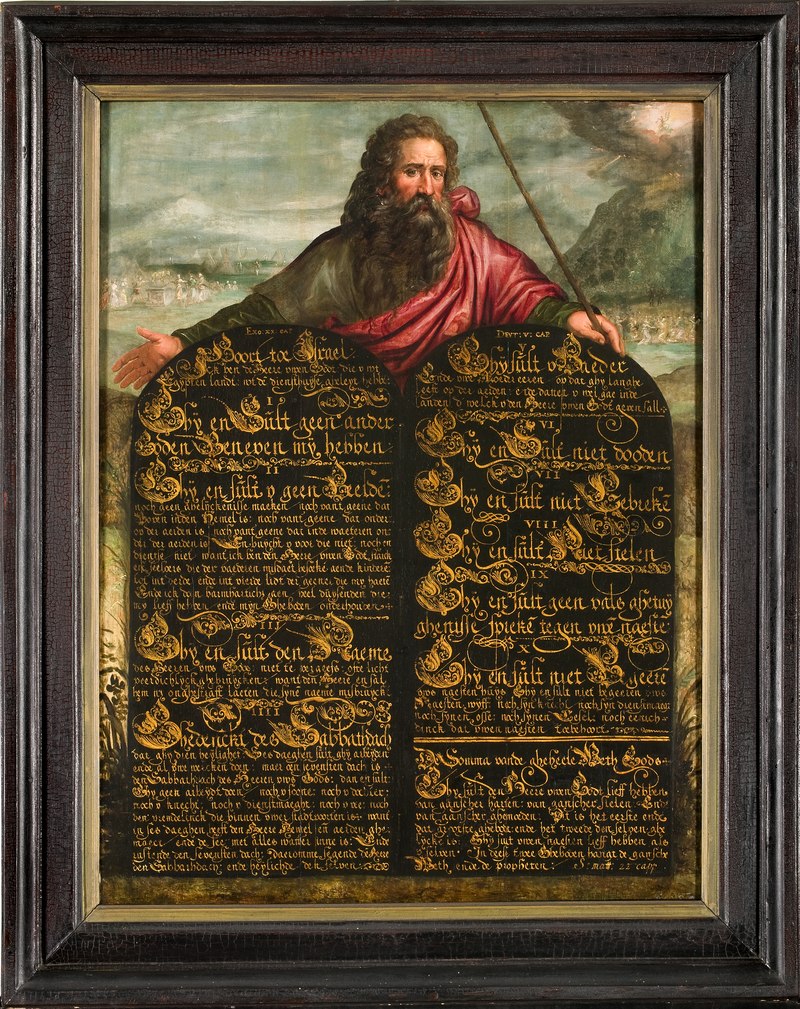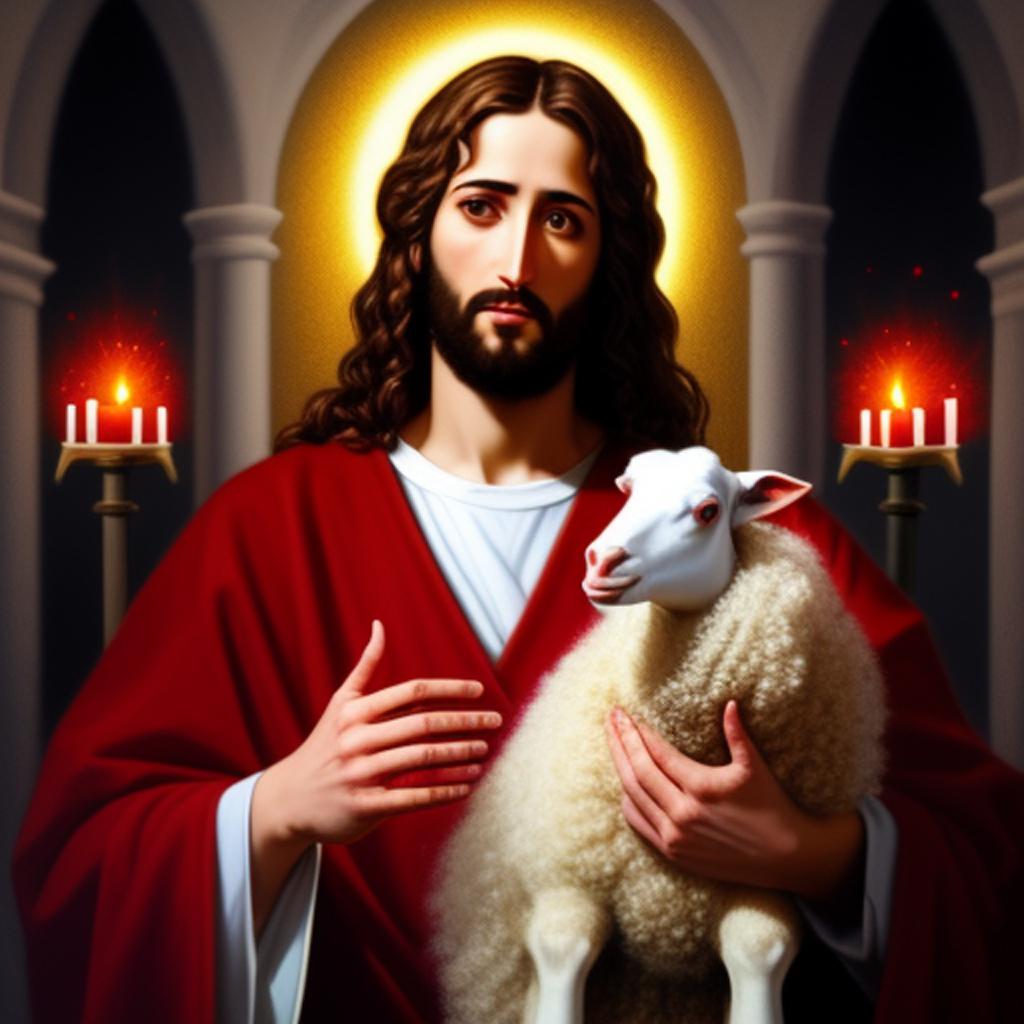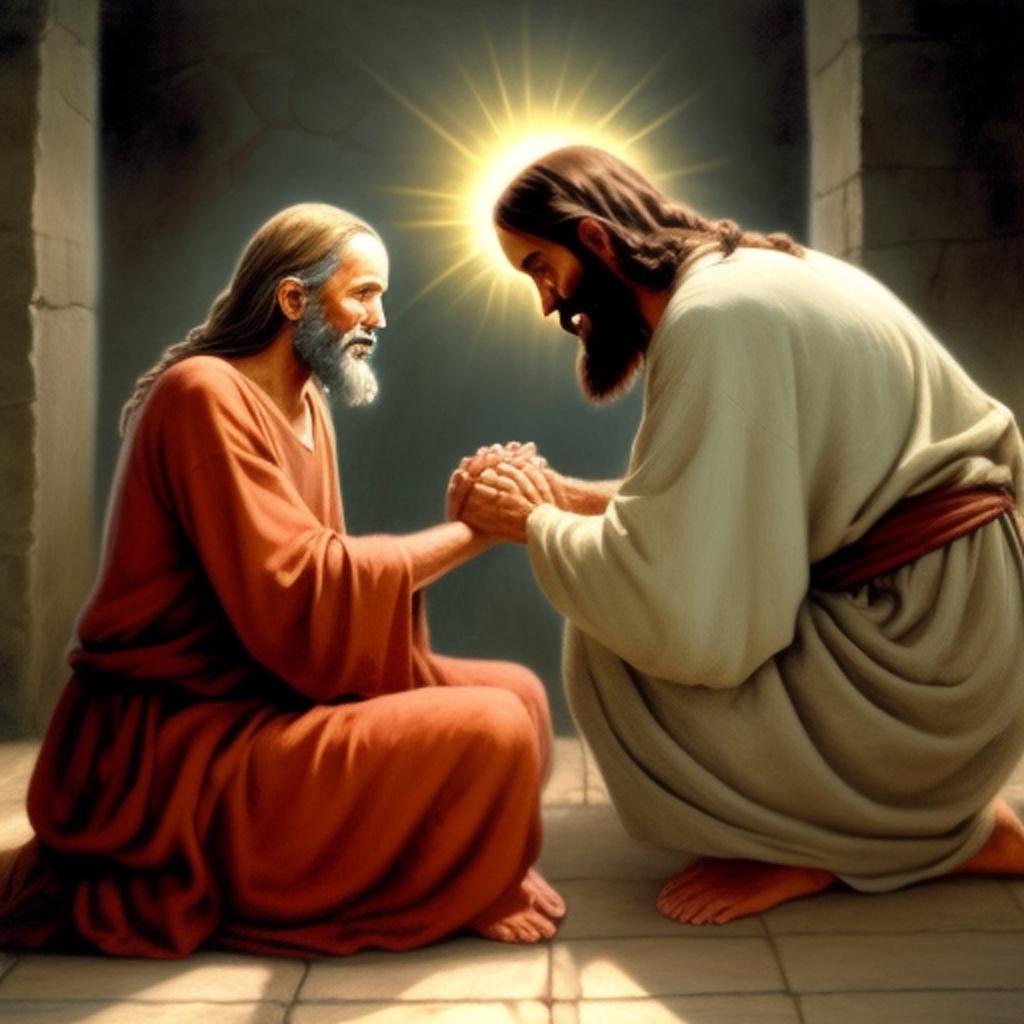Leviticus 24: A Symbolic Representation of Jesus as the Light of the World
In Leviticus 24, the Lord spoke to Moses, giving instructions for the care of the Tabernacle. These instructions included specific guidelines for the lampstand that was to be placed in the holy place. The lampstand, made of pure gold, symbolized Christ and His Church. It served as a visual representation of Jesus as the light of the world, illuminating our lives with His truth and salvation.
To further understand the significance of the lampstand in Leviticus 24, we can look to the New Testament for additional insights. In John 8:12, Jesus declares, “I am the light of the world. Whoever follows me will never walk in darkness, but will have the light of life”. This statement directly connects Jesus to the symbolism of the lampstand in Leviticus 24, reinforcing the idea that He is the source of spiritual illumination in our lives.
Additionally, the lampstand in Leviticus 24 is described as having seven branches, adorned with almond blossoms and golden flowers. The number seven holds great significance in the Bible, often representing completeness and perfection. This symbolism is echoed in Revelation 1:12-13, where the apostle John sees a vision of Jesus standing among seven golden lampstands. This vision signifies the complete and perfect presence of Jesus among His Church.
Messianic Prophecies and Foreshadowing in Leviticus 24
Leviticus 24 demonstrates intentional biblical patterns and themes that were discovered long after they were written, proving their significance. One such pattern can be observed in the symbolism of numbers. The number five, for example, represents grace in the Bible. In Leviticus 24, we see intentional connections to this theme.
An example of this can be found in the instructions for the Holy Bread in Leviticus 24. The bread was to be set before the Lord every Sabbath day, representing the twelve tribes of Israel. This act of setting aside the bread as an offering foreshadows Jesus as the bread of life. In John 6:35, Jesus declares, “I am the bread of life. Whoever comes to me will never go hungry, and whoever believes in me will never be thirsty”. This connection between the Holy Bread and Jesus further reinforces the Messianic prophecies and foreshadowing found in Leviticus 24.
Furthermore, Leviticus 24 demonstrates the intentional use of biblical patterns and themes that extend beyond its immediate context. These patterns and themes were discovered long after the book was written, providing evidence that they were not mere coincidences. The intricate connections between Leviticus 24 and the life and teachings of Jesus highlight the divine inspiration and foresight behind the Old Testament writings.
Leviticus 24 and Jesus in the Old Testament
The lampstand in Leviticus 24 represents Jesus as the light of the world. Just as the lampstand provided light in the holy place, Jesus illuminates our lives with His truth and salvation. The lampstand served as a reminder of God’s presence and guidance for the priests who carried out their duties in the Tabernacle.
Additionally, the Holy Bread mentioned in Leviticus 24 represents the people of God and their acceptance through Christ. This points to the role of Jesus as the one who brings people into a close relationship with God. The bread was considered most holy and was eaten only by the priests in a holy place. This act of consuming the bread symbolized the intimate communion between God and His people, made possible through the work of Jesus.
An example of Jesus fulfilling the symbolism of the Holy Bread can be seen in the Last Supper. During this Passover meal, Jesus took bread, gave thanks, and broke it, saying, “This is my body, which is for you; do this in remembrance of me”. In this act, Jesus established the connection between Himself and the Holy Bread, emphasizing His role as the bread of life and the means through which believers can have a close relationship with God.
Connection between Leviticus 24 and Jesus as the Messiah
The bread mentioned in Leviticus 24 is a memorial and offering made by fire to the Lord. It represents the everlasting covenant between God and His people. This covenant finds its fulfillment in Jesus as the Messiah, who established a new covenant through His sacrifice on the cross.
Leviticus 24 demonstrates the everlasting nature of this covenant and its significance in relation to Jesus as the Messiah. The bread, which was changed every Sabbath, signifies the continuous relationship between God and His people. Through Jesus, believers have access to God and can experience the grace and love of the everlasting covenant.
An example of this connection can be found in Hebrews 10:19-22, where the author describes the access believers have to God through Jesus. The author writes, “Therefore, brothers and sisters, since we have confidence to enter the Most Holy Place by the blood of Jesus, by a new and living way opened for us through the curtain, that is, his body, and since we have a great priest over the house of God, let us draw near to God with a sincere heart and with the full assurance that faith brings”. This passage highlights the role of Jesus as the great priest who allows believers to have access to God, just as the priests in Leviticus 24 had access to the Holy Bread.
Symbolism of the Candlestick and Branches
The branches of the candlestick in Leviticus 24 were made partakers of the same nature as the shaft, representing believers in Christ. The strength and beauty of the branches came from the shaft, symbolizing our dependence on Christ for power and transformation. This imagery emphasizes the role of Jesus as the source of life and power for believers.
An example of this symbolism can be seen in John 15:1-5, where Jesus uses the metaphor of a vine and its branches to illustrate the believer’s relationship with Him. Jesus says, “I am the vine; you are the branches. If you remain in me and I in you, you will bear much fruit; apart from me you can do nothing”. This passage highlights the dependence of believers on Jesus for spiritual growth and effectiveness in their lives.
Furthermore, the candlestick in Leviticus 24 is described as having seven branches, adorned with almond blossoms and golden flowers. These details are not merely decorative but carry symbolic meaning. The number seven represents completeness and perfection in the Bible. The almond blossoms and golden flowers symbolize beauty and fruitfulness. Together, these elements convey the idea that believers, represented by the branches, derive their strength and beauty from Christ, represented by the shaft of the candlestick.
Significance of the Clear Oil from Beaten Olives
The clear oil from beaten olives used in Leviticus 24 holds symbolic meaning, connecting it to Jesus as the Messiah. The process of beating the olives to extract the oil represents the suffering and sacrifice of Jesus on the cross. Just as the olives were crushed to produce the oil, Jesus endured the agony of crucifixion to bring about salvation and redemption for humanity.
The clear oil, free from impurities, signifies the purity and holiness of Jesus as our Savior. It represents His sinless nature and the perfect sacrifice He offered for the forgiveness of sins. This symbolism is echoed in various New Testament passages that describe Jesus as the unblemished Lamb of God. Through His death and resurrection, Jesus provides the means for humanity to be cleansed from sin and reconciled with God.
Leviticus 24 and the Weekly Sabbath and Annual Feasts
The instructions for the Menorah and Holy Bread in Leviticus 24 come after the instructions for the weekly Sabbath and the annual feasts. Leviticus 24 emphasizes the observance of religious practices as an integral part of the faith. The Menorah and Holy Bread serve as reminders of God’s presence and provision in the midst of the Israelites’ worship and celebrations.
The Menorah, with its seven branches, represents Christ as the light of the world. The lighting of the Menorah was a daily ritual in the Tabernacle and later in the Temple, symbolizing the ongoing presence of God among His people. This practice continues in Jewish tradition today, as the Menorah is lit during the celebration of Hanukkah, commemorating the rededication of the Second Temple.
The Holy Bread, also known as the Showbread, was an offering of twelve loaves that represented the twelve tribes of Israel. It was set before the Lord every Sabbath day and replaced with fresh loaves. This act symbolized the sustenance and provision of God for His people. The Holy Bread was considered most holy and was eaten only by the priests in a holy place. This practice highlighted the unique relationship between God and His chosen people.
Leviticus 24 in the Light of New Testament Teachings
The New Testament reinforces the connection between Leviticus 24 and Jesus as the Messiah, providing further insights into its significance. Jesus’ teachings and actions align with the symbolism found in Leviticus 24, affirming His role as the fulfillment of the Old Testament prophecies and foreshadowing.
As the light of the world, Jesus calls His followers to be reflectors of His light. In Matthew 5:14-16, Jesus tells His disciples, “You are the light of the world. A town built on a hill cannot be hidden. Neither do people light a lamp and put it under a bowl. Instead, they put it on its stand, and it gives light to everyone in the house. In the same way, let your light shine before others, that they may see your good deeds and glorify your Father in heaven”. This passage echoes the symbolism of the lampstand in Leviticus 24 and emphasizes the role of believers as reflectors of Jesus’ light in the world.
The concept of Jesus as the bread of life is further developed in the New Testament. In John 6:48-51, Jesus proclaims, “I am the bread of life. Your ancestors ate the manna in the wilderness, yet they died. But here is the bread that comes down from heaven, which anyone may eat and not die. I am the living bread that came down from heaven. Whoever eats this bread will live forever. This bread is my flesh, which I will give for the life of the world”. These words establish a direct connection between Jesus, the Holy Bread in Leviticus 24, and the sustenance and eternal life He offers to believers.
Understanding Leviticus 24 within the Old Testament Messianic Narrative
Leviticus 24 contributes to the broader Old Testament Messianic narrative, deepening our understanding of Jesus as the Messiah. It highlights the consistent themes and patterns found throughout the Bible, ultimately pointing to the redemptive work of Jesus and His central role in God’s plan of salvation.
The Old Testament contains numerous prophecies and foreshadowings that anticipate the coming of a Messiah who would bring salvation and reconcile humanity with God. Leviticus 24 adds to this narrative by providing symbolic representations of Jesus as the light of the world, the bread of life, and the ultimate mediator between God and humanity.
One of the key themes in the Old Testament Messianic narrative is the need for a mediator between God and humanity. Leviticus 24 portrays Jesus as the ultimate mediator, connecting believers to God through His sacrifice and provision. This theme is further developed in the New Testament, where Jesus is described as the high priest who makes intercession for believers before God. Leviticus 24, therefore, serves as a significant piece of the puzzle in understanding the broader narrative of the Old Testament and its fulfillment in Jesus.
Exploring the Significance of Leviticus 24 and its Relation to Messianic Jesus
In summary, Leviticus 24 holds profound significance in its relation to Jesus as the Messiah. The symbolism found in the lampstand, Holy Bread, branches, and clear oil all point to various aspects of Jesus’ character, role, and redemptive work. Leviticus 24 not only foreshadows Jesus’ coming but also provides a deeper understanding of His identity and purpose. By exploring the connections between Leviticus 24 and the New Testament teachings, we gain a greater appreciation for the intricate and intentional design of God’s plan of salvation throughout the Bible.
The lampstand represents Jesus as the light of the world, illuminating our lives with His truth and salvation. The Holy Bread symbolizes the acceptance of God’s people through Christ, highlighting the intimate communion between believers and God. The branches of the candlestick remind us of our dependence on Christ for strength and transformation. The clear oil from beaten olives signifies the purity and holiness of Jesus as our Savior. Leviticus 24 also emphasizes the observance of religious practices as an integral part of the faith, reinforcing the importance of worship and the ongoing relationship between God and His people.
As we delve deeper into the profound symbolism of Leviticus 24, we are invited to embrace the transformative power of Jesus in our lives. He is the light that guides us, the bread that sustains us, and the mediator who brings us into a close relationship with God. Leviticus 24 contributes to the broader Messianic narrative of the Old Testament, pointing to the redemptive work of Jesus and His significance as the fulfillment of God’s promises. May we continue to explore and appreciate the profound significance of Leviticus 24 and its relation to Messianic Jesus.
#JesusChrist #OldTestamentSymbolism #BiblicalTeachings #MessianicConnections #BreadofLife #DivineIllumination #SpiritualSignificance #ScripturalForeshadowing #ReligiousSymbols #ChristianFaith #NewTestamentRelevance #EternalCovenant #SacrificialImagery #SpiritualDependence #BiblicalNarrative #FaithandWorship #MessiahinScripture #ScriptureInterpretation #SpiritualReflection #Leviticus24 #LightoftheWorld #SymbolisminScripture #MessianicForeshadowing #BiblicalSignificance



